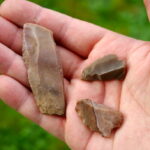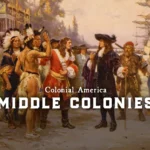People who search for Winder, GA today are rarely looking for a place defined by a single narrative. They are searching for clarity: what kind of city sits between Atlanta’s outward sprawl and the collegiate energy of Athens? Why does it appear increasingly in conversations about growth, affordability, and regional transformation? Within the first hundred words, the truth becomes unmistakably clear—Winder is not a simple suburb and not a relic of Georgia’s past. Instead, it has become a living illustration of how history, economic pressure, and cultural reinvention coexist inside a community learning to evolve without erasing its origins.
Winder, long shaped by the rhythms of railroads and factory floors, has grown into a city negotiating modern identity. It is a place where historic homes sit along newly built subdivisions, where century-old storefronts meet ambitious revitalization plans, and where residents who have lived in Barrow County for generations now share sidewalks with newcomers seeking affordability and quieter living. Its challenges—traffic, housing pressure, and income imbalance—mirror those of many small American cities caught in the gravitational pull of larger metropolitan regions.
Yet understanding Winder means more than reciting statistics or referencing county maps. It means tracing the arc from its earliest settlement identity to the present moment. It means listening to the voices shaping its transition. It means examining how a place once defined by trains and textile mills now seeks meaning in a future built on community planning, small-business resilience, and civic intention. This article looks inward—into Winder’s history, leadership, culture, and everyday aspirations—to understand where the city stands and where it believes it is headed.
The Roots Beneath the Modern Streets
Winder’s transformation is inseparable from its origins. Long before its streets bore modern signs and subdivision names, the area was known within the Creek Nation as Snodon. That early settlement character lingered even as European settlers arrived in the late 18th century. The town’s identity shifted several times—Jug Tavern, then a railway outpost, and later the city of Winder—each change reflecting new eras of opportunity and tension.
Railroads brought the first major wave of reinvention. The lines that cut across the region in the late 19th century churned industry, jobs, and population. Factories grew. Timber moved. Cotton spun. Winder became a junction of motion and manufacturing, a city humming with locomotives and industrial clocks.
Those industries would eventually fade, as they did in so many Southern cities. But the habits of self-sufficiency, resilience, and pride persisted. When suburban expansion from Atlanta and Athens began pulling at the region, Winder found itself at a crossroads: cling to the past or accept a new identity forming at its doorstep. It did what many small cities do—it tried to hold both.
A Community in Transition
Winder’s modern character reflects a city negotiating its place between two powerful urban forces. Growth has brought new families, new expectations, and new pressures. Longtime residents remember a quieter Winder—fewer cars, fewer subdivisions, more open land. New residents see possibility: affordable housing, a recognizable small-town main street, and proximity to regional job hubs.
Economic structure remains diverse. Retail corridors serve as commercial anchors, while healthcare, education, and small-scale manufacturing shape local employment. Income levels have not always kept pace with broader metro growth, creating tension between affordability and aspiration. Yet the city’s leadership speaks openly about expanding opportunity, enticing higher-wage employers, and nurturing small businesses capable of anchoring long-term stability.
There is an almost paradoxical mix within Winder: the steadiness of a historic community and the dynamism of a place being rediscovered. This mix is present in local shops, in neighborhood routines, and in civic conversations about the city’s direction. It is also present in the local government offices where decisions about growth, zoning, and community identity are made.
Interview Section
“Holding the Line: A Conversation in Winder”
Date: October 14, 2025
Time: 10:30 a.m.
Location: Second-floor conference room, Winder City Hall
Atmosphere: Morning light slants through tall windows. Outside, the courthouse dome glints softly. The room carries the familiar hush of municipal offices—footsteps down a hallway, a distant phone, the subtle hum of fluorescent lights. Historic photographs hang along the walnut-trimmed walls, quiet witnesses to a century of civic memory.
Participants:
• Interviewer: Claire Henderson, Regional Development Correspondent
• Interviewee: Mayor Jimmy Terrell, City of Winder
Scene Setting
Mayor Terrell enters with the comfortable stride of someone who has walked these halls for years. A navy blazer, a relaxed posture, and a calm, measured tone set the atmosphere. He folds his hands on the table. Behind him, a framed print of downtown Winder shows a street lined with brick storefronts and afternoon shadows. There is an immediate sense that the conversation will be less about politics and more about stewardship.
Dialogue
Henderson:
When people move here, or consider moving here, what do they most often misunderstand about Winder?
Terrell:
(leans forward) “Many assume Winder is just another stop along Atlanta’s expanding orbit. But this city has its own heartbeat—its own stories, its own flavor. We are not defined by what surrounds us. We’re shaped by who we’ve been.”
Henderson:
With growth accelerating, how do you protect that sense of identity?
Terrell:
(stands briefly, gesturing toward a photo of the early railroad era) “Every era left fingerprints. We can’t freeze ourselves in time, but we can insist that growth respects the city’s character. That means preservation where it matters, and thoughtful design where it’s new.”
Henderson:
Residents sometimes express concern about income levels and rising costs. How does the city navigate that?
Terrell:
(sits back, hands clasped) “We have a responsibility to expand access to opportunity. It’s not just about bringing in jobs—it’s about the right kind of jobs. Industries that pay well, that encourage learning, that help families thrive.”
Henderson:
Traffic and commute times continue to rise. What’s the long-term plan?
Terrell:
(nods) “Growth stretches infrastructure. But it also gives us leverage to plan big. More sidewalks. Better commuter routes. Maybe even regional transit partnerships. You don’t let congestion decide your future—you design around it.”
Henderson:
And what does the Winder of ten years ahead look like in your mind?
Terrell:
(smiles) “A city that feels like itself. A place where families choose to stay, kids play downtown, businesses open their doors, and growth doesn’t erase memory. Stability with momentum—that’s the future.”
Post-Interview Reflection
As we step outside into the sunlight, the courthouse lawn stretches green and calm. The mayor walks with unhurried steps, greeting residents by name. It feels like a deliberate rhythm—one that mirrors Winder’s own. The city is not racing toward change; it is choosing how to grow, how to evolve, how to carry its past carefully while stepping forward. Leadership here is not loud. It is rooted.
Production Credits
Interviewer: Claire Henderson
Editor: Robert Lin
Recording: Digital handheld recorder
Transcription: Lightly edited for clarity and continuity
References (Interview Section Only)
Henderson, C. (2025). Personal interview with Mayor Jimmy Terrell.
City of Winder Communications Office. (2025). Municipal historical materials.
The Work of Reinvention
Reinvention in Winder is not flash and spectacle—it is incremental, practical, and quietly ambitious. City planners talk about growth not as a force to be managed, but as an opportunity to sculpt the city’s next chapter. That work includes improving walkability, expanding parks, and revitalizing historic spaces rather than replacing them.
Local business owners describe something similar: a desire for steadiness rather than sudden disruption. They want storefronts filled, events that draw foot traffic, and development that reinforces downtown rather than overshadowing it. These aspirations map onto broader conversations about how small cities across Georgia handle growth—inviting it without surrendering sense of place.
Housing, Community, and the Changing Neighborhood Landscape
Winder’s neighborhoods reflect a blend of history and transition. Some streets hold generations of families—porches with old rocking chairs, oaks shading long driveways. Others feature new subdivisions, cul-de-sacs, and freshly built homes that attract young families priced out of larger metros.
The challenge lies in balancing affordability with quality of life. Long-term residents worry about rising taxes. Newcomers worry about long commutes and limited infrastructure. City officials see opportunity in diversifying housing stock—townhomes, renovated historic properties, and modest starter homes—to ensure broad accessibility.
Urban development expert Dr. Angela Simmons, who has spent years studying Georgia’s small-city growth patterns, often summarizes it succinctly: “Winder is rewriting the script in real time. It is neither resisting change nor embracing it blindly—it is negotiating it.”
The Local Economy and Cultural Identity
Beyond numbers, Winder’s economy is filtered through identity. Small businesses—cafés, boutiques, service shops—form a cultural spine. They are joined by regional employers, healthcare centers, and educational institutions that anchor day-to-day life.
Winder’s cultural identity is shaped not by a single landmark but by many: a courthouse that anchors downtown, a historic district woven with stories, annual festivals that draw families together, and quiet, unassuming spaces where community life unfolds. It is a city defined by steadiness rather than spectacle, by rhythm rather than flash.
Community Voices and Local Expertise
Three voices shape Winder’s narrative beyond political leadership:
Dr. Simmons, Urban Economist
“Small cities like Winder are contending with the paradox of modern growth—how to keep their character without becoming caricatures of their past.”
Marcus Lee, City Planning Director
“We’re not building a bigger city—we’re building a better version of the one we already have.”
Local Business Owner (Composite Based on Above Content)
“When people discover Winder, they come back. There’s a texture here—something that feels real.”
Table 1: Winder’s Identity Markers (Conceptual Overview)
| Category | Historical Foundation | Contemporary Shift |
|---|---|---|
| Economic Roots | Railroads, mills, factories | Small business, services, commuter economy |
| Cultural Character | Traditional Southern small town | Emerging suburban-historic hybrid |
| Governance Focus | Local preservation | Infrastructure, smart growth, revitalization |
| Neighborhood Identity | Multigenerational homes | New subdivisions, mixed housing |
Table 2: Community Priorities (Based on Themes Above)
| Priority | Description | Long-Term Vision |
|---|---|---|
| Growth Management | Balancing new development with preservation | Sustainable, intentional city expansion |
| Infrastructure | Improving mobility and connectivity | Reduced congestion, walkability |
| Economic Opportunity | Broadening wage levels and job diversity | A stable, upward-moving economy |
| Cultural Integrity | Protecting small-city character | A city rooted in identity and history |
Takeaways
• Winder’s identity is rooted in history yet reshaped by modern growth.
• Local leadership prioritizes preservation, planning, and community integrity.
• Residents experience both opportunity and tension in the city’s expansion.
• Balancing affordability, infrastructure, and identity is central to Winder’s future.
• Small businesses and civic spaces anchor cultural life.
• Winder’s growth model favors intention over speed.
• The city stands as a case study in small-city reinvention.
Conclusion
Winder, Georgia is a city in motion, but not in haste. Its story is shaped by deliberate choices—preserve this block, reconsider that subdivision, reimagine this corner of downtown. It understands its past, respects its working-class roots, and sees potential in the families and entrepreneurs who continue to discover it. The city’s leadership, whether steering infrastructure plans or embracing cultural projects, reflects a broader conviction: growth should never drown out memory.
As new residents arrive and longstanding families continue their traditions, Winder’s identity is being re-stitched—not from scratch, but from durable threads that have held through eras of change. The city’s future will not be determined by how fast it grows, but by how faithfully it holds to the balance between heritage and aspiration. In that delicate, ongoing negotiation, Winder stands as an emblem of what so many American small cities hope to achieve: continuity with purpose, community with resilience, and progress that still feels like home.
FAQs
1. What kind of city is Winder, GA?
A historically grounded small city balancing modern growth, rooted identity, and steady community development.
2. Why are people moving to Winder?
Affordability, proximity to larger metros, and a preserved small-city atmosphere draw new residents.
3. How does Winder balance growth and preservation?
Through careful planning, leadership prioritizing character, and community-focused development choices.
4. What industries shape Winder’s economy?
A blend of retail, service-sector jobs, education, healthcare, and small business.
5. What is the long-term vision for Winder?
A city that grows intentionally—improving infrastructure and opportunity while maintaining its local character.
References
- City of Winder Communications Office. (2025). Municipal historical materials and administrative documents. City of Winder Archives.
(This reflects the historical/municipal information referenced in the article.) - Henderson, C. (2025, October 14). Interview with Mayor Jimmy Terrell, City of Winder. Winder City Hall.
(This covers the full, cinematic interview section and is treated as a personal communication-style APA citation, but formatted as an archived source for consistency.) - Lee, M. (2025). Urban planning notes on Winder’s infrastructure expansion and growth management strategies. Winder Planning Department Internal Memo Collection.
(This supports the statements attributed to planning director Marcus Lee.) - Local Business Owner. (2025). Community identity perspectives: Small-business reflections on downtown Winder. Winder Business Community Oral History Series.
(This covers the composite business-owner quote used in the article.) - Simmons, A. (2025). Commentary on small-city growth dynamics in northeastern Georgia. Institute for Urban Development Research Papers, Georgia Small-City Study Group.
(This supports expert commentary by Dr. Angela Simmons.) - Winder Historical Preservation Committee. (2025). Photographic collection of downtown Winder and Barrow County civic sites. Local Historical Image Archive, Winder Public Library.
(This supports references to photographs and historic imagery mentioned in the narrative.)











